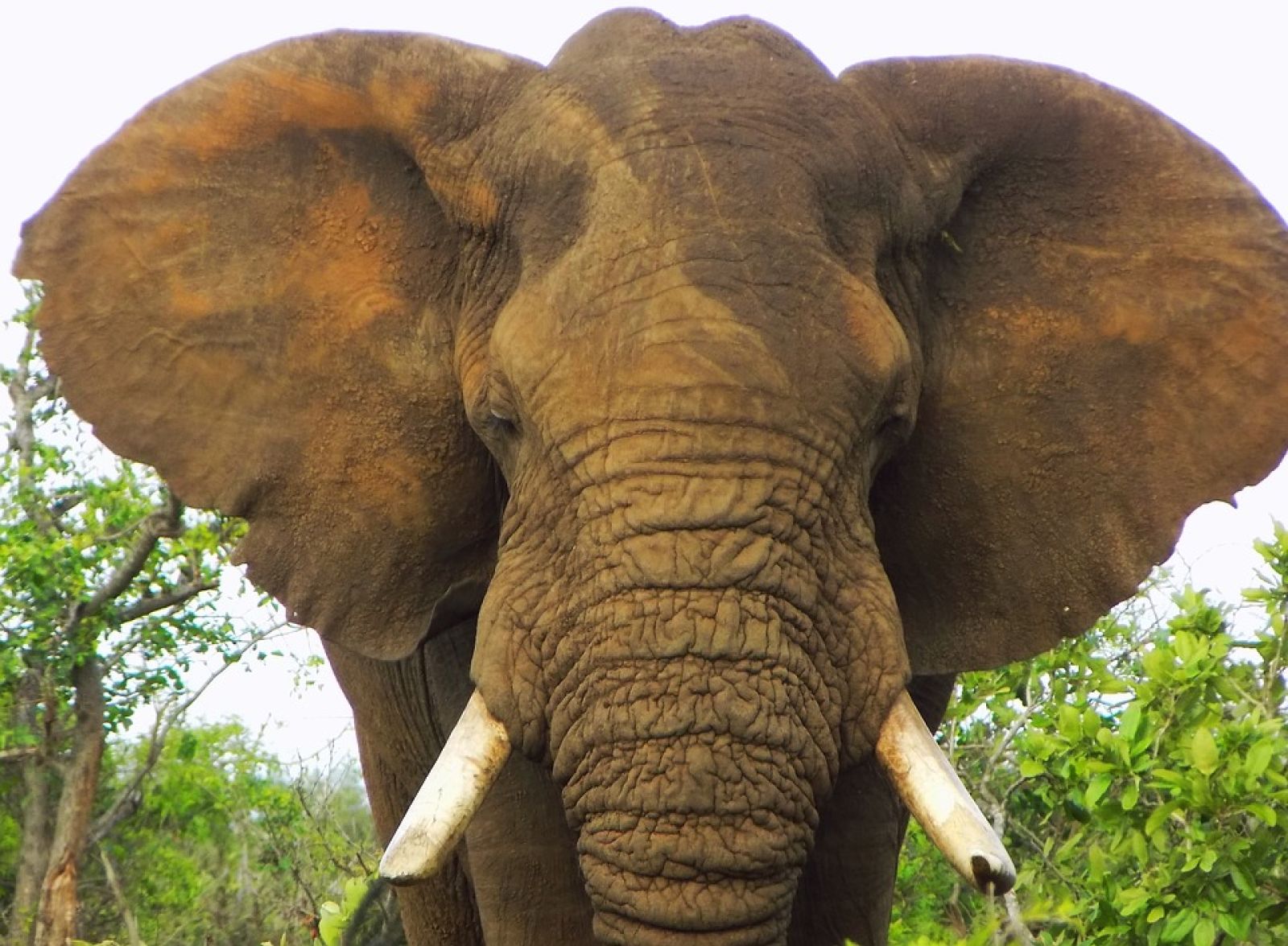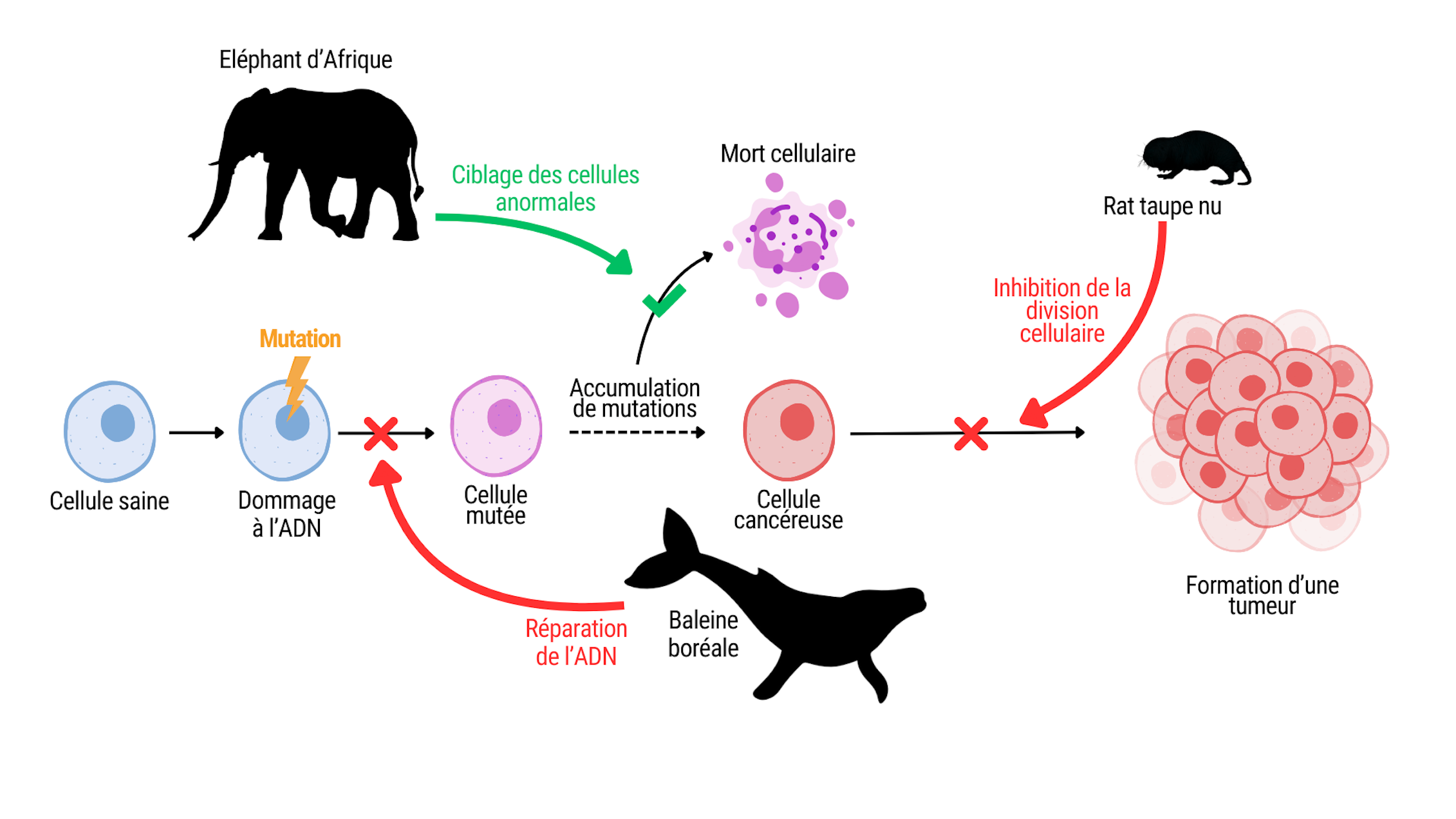Why do large animals develop fewer cancers?
Published by Redbran,
Source: The Conversation under Creative Commons license
Other Languages: FR, DE, ES, PT
Source: The Conversation under Creative Commons license
Other Languages: FR, DE, ES, PT
Follow us on Google News (click on ☆)
With more than 10 million human deaths per year, cancer is the second leading cause of death worldwide. The number of cases has been steadily increasing over the past few decades, a phenomenon often attributed to aging populations, rising exposure to potentially carcinogenic environmental pollutants such as pesticides, and the growing obesity rates in many countries.

Like other large animals, the elephant develops fewer cancers than humans, despite having a longer lifespan and many cells that could turn into tumors.
Illustrative image Pixabay
But humans are not the only species affected by cancer. Indeed, while this disease is well-documented in pet and livestock animals, we now know that it is also present in the vast majority of multicellular organisms, from mussels to elephants. However, not all these species exhibit the same level of cancer susceptibility. For example, the blackbuck antelope, an herbivorous species native to India, almost never develops it, whereas the kowari, a small carnivorous marsupial from Australia, exhibits a very high cancer rate.
Determining the factors explaining why some animal species are much less affected by cancer and understanding the mechanisms behind their resistances is therefore a promising research area for developing new treatments.
Large animals do not have more cancer than others: Peto's paradox
In this context, very large species are particularly interesting to researchers. Indeed, large animals have many cells, each of which could potentially become cancerous.
Cancer is caused by the accumulation of mutations, which are accidental alterations to DNA. Within cells, there are efficient DNA repair mechanisms that make mutations rare. Nonetheless, these mutations accumulate at a steady pace throughout an organism's life. When these mutations affect genes that regulate cell proliferation, DNA repair, or genome stability, the cell's operation can be disrupted. This can lead to uncontrolled cell proliferation, which may form a tumor.
So, assuming that all cells have the same probability of accumulating mutations, larger animals, which have more cells, should develop more cancers. This is indeed a pattern seen within certain species, such as humans and dogs, where larger size is associated with an increased likelihood of developing cancer.
However, when comparing cancer frequencies among mammalian species, this correlation with body size does not hold. Larger species do not develop more cancer than others.
This phenomenon is known as Peto's paradox, named after the British statistician and epidemiologist who first described it. This discovery suggests that the evolution of large size came alongside the emergence of more effective cancer resistance mechanisms. Similarly, these mechanisms may also exist in species with longer lifespans, where mutations have more time to accumulate. Several scientific teams worldwide are now trying to identify the "secrets" of these animals to combat this disease.
A multitude of cancer resistance mechanisms
The emblematic species associated with Peto's paradox is the African elephant, as it was the first large species for which a cancer resistance mechanism was identified. The elephant genome contains 20 copies of a particular gene, called TP53, whereas our species has only one copy. The protein produced by the TP53 gene is responsible for monitoring and eliminating cells with abnormal behavior. It also plays a role in DNA repair, limiting the development of cancerous processes in these pachyderms.
In the marine world, the bowhead whale exemplifies this paradox with an earlier-acting cancer resistance mechanism. This mammal, which lives around 200 years, has a highly accurate and efficient DNA repair system for certain types of damage. This system involves two proteins that limit the accumulation of mutations responsible for turning healthy cells into cancerous ones.
Smaller species also exhibit strong anti-cancer mechanisms. The naked mole-rat, a longevity champion among rodents, is extremely cancer resistant. It appears to have several mechanisms to limit tumor development. For instance, this species has an increased sensitivity to the density of cells within a tissue, partly due to high production of a complex sugar, a very dense form of hyaluronic acid. Thus, if too many cells are clustered in one area, they stop dividing, preventing tumor formation.

The cancer resistance mechanisms identified in some species intervene at different stages of cancer formation.
Louise Maille, Crystal Morin/Université de La Rochelle, Provided by the author
A source of inspiration for medicine?
From wind turbine blades modeled after whale fins to the holding power of Velcro mimicking burdock fruits, nature has been a source of inspiration for technology for centuries. This approach, called biomimicry, has also been applied to the medical field multiple times. However, it has so far been little used to fight cancer, even though it is one of the deadliest diseases.
Large size has independently appeared many times throughout evolution (10 times for mammals alone), suggesting the potential emergence of as many cancer resistance mechanisms. This hypothesis is currently supported by research since a different mechanism has been discovered for each species studied that resists this pathology. Thus, by studying new species, we may identify many other cancer resistance mechanisms, hoping that one of them could be applicable to human treatments.